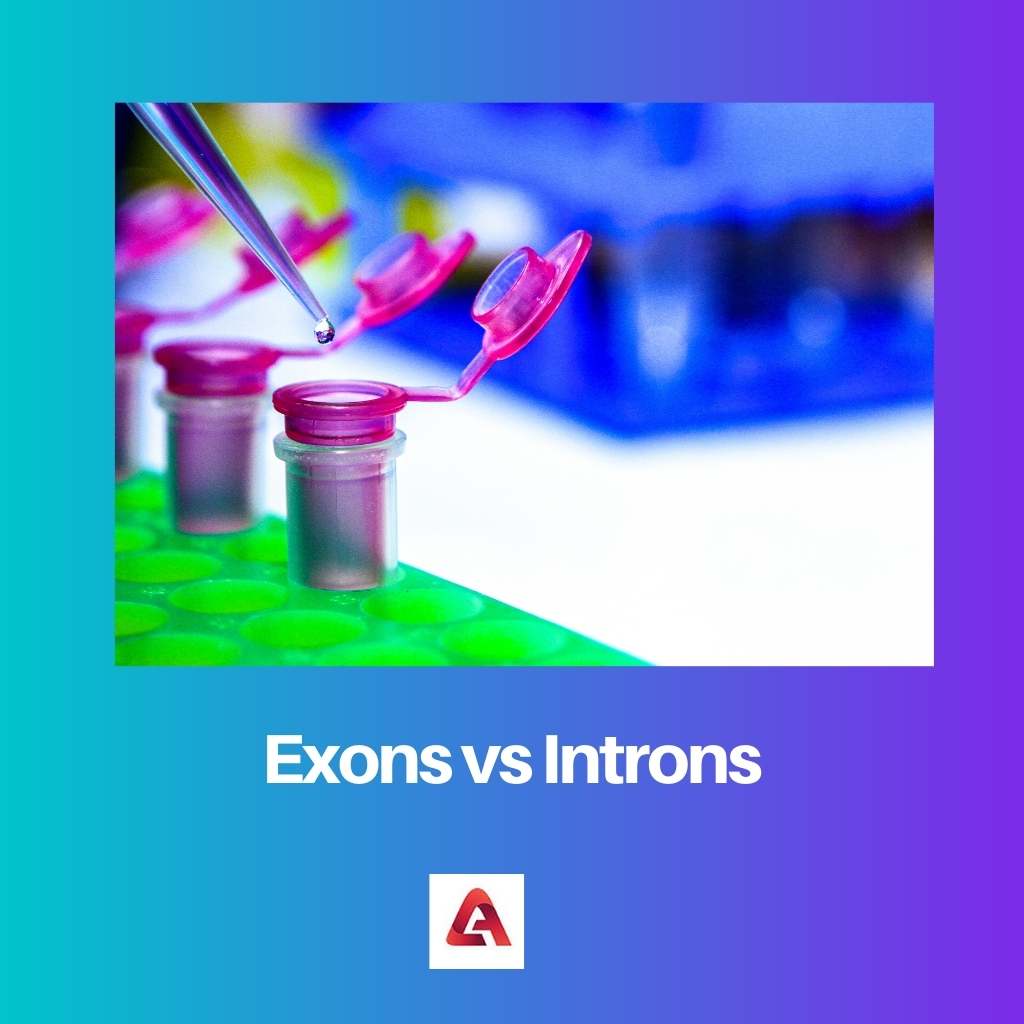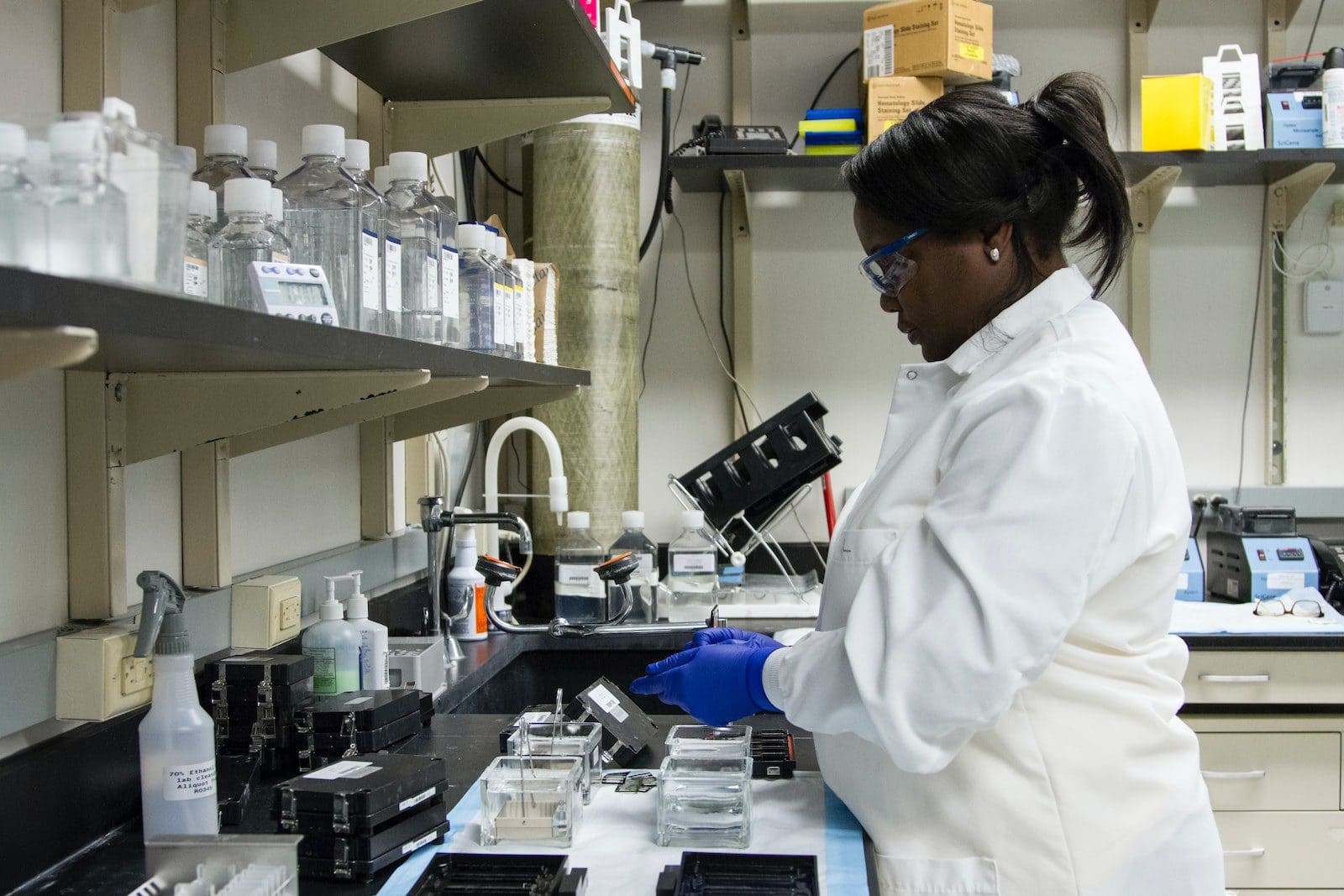The nucleotide sequences in a gene are of two types, exons and introns. They are responsible for protein synthesis Within a gene. Sometimes the non-coding regions interrupt the coding regions.
In this article, we will understand the key terms exons and introns and the difference between exons and introns.
Key Takeaways
- Exons are DNA coding sequences translated into proteins, while introns are non-coding sequences interspersed between exons.
- Unlike exons, introns do not code for proteins and are removed from the pre-mRNA during splicing.
- While exons contain the genetic information that determines the structure and function of proteins, introns play a role in regulating gene expression and alternative splicing.
Exons vs Introns
A gene is composed of coding and non-coding regions that direct protein synthesis. Exons are the coding regions transcribed into messenger RNA (mRNA) and then translated into a protein. Introns are non-coding regions that interrupt the coding sequence and do not encode for a protein. Introns play an essential role in regulating gene expression by determining which exons are included in the final mRNA product and providing alternative splice sites allowing multiple mRNA and protein variants to be produced from a single gene.

Exons code different types of proteins by different sequences formed via different configurations through a combination of exons. It is part of a gene that encodes one or more parts of the produced mature RNA after the removal of introns by RNA splicing.
The DNA sequence within a gene and the sequence in RNA transcripts describe the term exon.
Introns are the nucleotide sequences that are removed by splicing of RNA when the final product of the RNA matures. An intragenic region within a gene is well described as an intron.
Introns can convert into novel genes throughout the evolutionary process of the non-coding short regions that convert into real functional genes.
Comparison Table
| Parameters of comparison | Exons | Introns |
|---|---|---|
| Sequence type | Exons code specific proteins and are protein-coding sequences. | Introns do not code and are non-coding sequences. |
| Found in | Exons are found in both prokaryotic and eukaryotic organisms or genomes. | Introns are found in a single-celled organism or eukaryotic organism only. |
| Present in | Mature RNAs, mRNA transcripts, DNA. | mRNA transcripts, DNA but not in mature mRNAs. |
| Protein Synthesis | Exons synthesize and are involved in protein synthesis. | Introns do not synthesize proteins. |
| Quantity | Exons are available in lesser quantity in a genome. | Introns are available in higher quantities. |
| Human genome composition | The human genome constitutes 1% of exons. | The human genome constitutes 24% of introns. |
What are Exons?
The DNA sequences that code proteins are called Exons. However, they require some information or the codons that are necessary for the synthesis of proteins. The region that ks expressed in the genome is termed an exon.
In eukaryotic organisms, the exons that separate introns code. The exosome is the complete set of exons present in an organism’s genome.
The removal of introns that are present in between the exons leads to the coding of messenger RNA or mRNA during the splicing of RNA. After the transcription process, introns and exons occur in the resulting RNA.
While RNA splicing, the introns are removed, producing mature messenger RNAs. This mature messenger RNA that gets transcripted has untranslated regions along with exons. In the entire sequence, exons form a small part.
Exons are not limited to a few organisms. They are present in organisms like viruses to jawed vertebrates. One per cent of the human genome comprises exons and intergenic DNA. Introns occupy the rest.
Exonization is the process in which introns are sometimes converted into exons. Exons hold much importance in the protein synthesis process. Exons carry codons and code various protein molecules.
Exons are responsible for the coding of proteins and especially the sequence of amino acids. The conservation of exons and sequences is high as the exons and their sequence with times do not change. Exons are excessively present in messenger RNA.

What are Introns?
When RNA product matures within a gene, the non-coding sequences of DNA are separated by RNA splicing. Those are called Introns. The intragenic region that is present in a gene represents Intron.
Introns are responsible for showing that, within a gene, the existing DNA sequences transcript with the corresponding RNA sequence.
Introns are found in organisms comprising multiple cells, eukaryotic organisms. These are also found in various viruses and genes. Transfer RNA, ribosomal RNA generates proteins and includes introns in them. Prokaryotic organisms or organisms having single cells lack introns.
However, in eukaryotes, Introns are found in the intervening area between two Exons. Introns specifically undergo splicing as they cannot code the proteins directly. Even before the mRNA makes proteins, these introns are removed.
The conservation of introns is a very challenging task. Therefore their removal is necessary so that incorrect protein formation can be prevented.
Introns can vary according to the analysis of their sequence, genes, and biochemistry of splicing methods of RNA. The existence, survival, and sustenance of Introns require a high amount of energy. They start burdening some cells due to their high consumption of energy.
They need the energy to precisely imitate and excise at the correct position via complicated techniques such as the spliceosomal technique.

Main Differences Between Exons and Introns
- Exons exist between two introns of two untranslated regions or one Intron and one untranslated region, whereas Introns are present in a DNA sequence between two exons.
- Exons are strictly found in multi-celled and single-celled organisms and genomes, whereas introns are found only in single-celled organisms and genomes.
- Exons separate the nucleus from the cytoplasm after synthesising mature messenger RNA, whereas, Introns do not leave the nucleus during the processing of RNA, even after the splicing of the messenger RNA transcription.
- Exons within a cell can be found in mRNA transcripts, DNA, and mature RNAs. Whereas introns, within a cell, can be found in messenger RNA transcripts and DNA but not in mature messenger RNAs.
- The sequence is conserved highly in exons and is not subjected to frequent changes, whereas exonization converts some introns into exons.
- Inside the nuclear genome, the quantity of exons present is less. However, the introns are present in higher quantities.
- Through alternative splicing, Exons are connected, two or more in number, and introns are removed.




